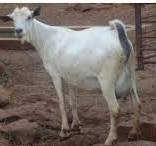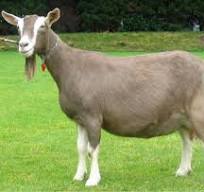Goat farming in Kenya has evolved into one of the most profitable and sustainable ventures in the livestock sector. With the country’s diverse climate and increasing demand for both meat and dairy products, farmers are turning to improved breeds that offer better yields, adaptability, and resilience. From the arid lands of Marsabit to the fertile highlands of Central Kenya, goat rearing is no longer a small-scale, subsistence affair—it’s a thriving agribusiness.
This blog explores the top goat breeds currently in highest demand in Kenya, the market factors driving their popularity, and the benefits of strategic crossbreeding for both smallholder and commercial farmers.
1. Galla Goat – Kenya’s Indigenous Meat Powerhouse

The Galla goat, also known as the Somali goat, remains the backbone of Kenya’s goat meat industry. Originating from the arid and semi-arid regions of Northern Kenya, this breed has earned a reputation for resilience, adaptability, and high-quality meat production.
Key Characteristics:
– Hardiness: Thrives in hot, dry environments with minimal feed and water.
– Adaptability: Performs well in regions like Marsabit, Isiolo, and Garissa.
– Meat Quality: Produces lean, tender meat that is favored in Kenyan and Middle Eastern markets.
– Crossbreeding Potential: Often crossbred with Boer and Savannah goats to enhance growth rate and carcass yield.
Farmers appreciate Galla goats for their low maintenance cost and ability to survive where exotic breeds struggle. Their natural disease resistance makes them ideal for pastoralists and semi-commercial operations. Improved Galla-Boer and Galla-Savannah crosses have become popular for commercial meat production due to superior body mass and faster maturity rate.
2. Boer Goat – The Premium Meat Boer goat

When it comes to commercial meat goat farming, few breeds can rival the Boer goat. Originally developed in South Africa, the Boer is prized globally for its rapid growth, large frame, and exceptional meat yield. Kenyan farmers have embraced this breed for its ability to transform ordinary goat farming into a high-return agribusiness.
Key Characteristics:
– Fast Growth: Gains weight quickly, reaching market size in 6–8 months.
– High Carcass Weight: Can weigh between 80–100 kg for males.
– Superior Meat Quality: Known for tender, flavorful meat that attracts premium prices.
– Docile Temperament: Easy to manage and suitable for intensive or semi-intensive farming systems.
3. Dairy Breeds: Saanen, Toggenburg, and Alpine
The Kenyan goat dairy industry has witnessed a steady rise in demand, thanks to growing awareness of goat milk’s nutritional value and its digestibility compared to cow milk. Among dairy breeds, the Saanen, Toggenburg, and Alpine stand out as the most preferred options.
a) Saanen Goat: Known as the ‘queen of dairy goats,’ the Saanen is renowned for its exceptionally high milk yield, producing between 3–5 liters per day. It performs best in cool, highland regions like Nyeri and Nakuru.
b) Toggenburg Goat: This Swiss dairy breed is well adapted to Kenya’s varied terrain and produces rich, creamy milk with a distinct flavor preferred by many consumers.
c) Alpine Goat: The French Alpine combines high milk yield with strong adaptability to tropical conditions. Its milk has balanced fat content, making it perfect for processing.
4. Crossbreeds – The Future of Kenyan Goat Farming
Crossbreeding is reshaping Kenya’s goat farming landscape. By combining the strengths of indigenous and exotic breeds, farmers are producing animals that grow faster, resist disease, and perform better in local conditions.
a) Savannah × Galla (Meat Cross): The Savannah goat, a South African breed, is known for its high growth rate and meat yield. When crossed with the hardy Galla goat, the offspring exhibit improved growth, higher carcass weight, and better adaptability.
b) Saanen × Toggenburg (Dairy Cross): For dairy farmers, crossing Saanen and Toggenburg goats produces hybrids with enhanced milk production and tropical climate tolerance.
5. Market Demand Dynamics in Kenya (2025 Outlook)
The market for goats and goat products in Kenya continues to grow, driven by both local consumption and export potential. Goat meat (chevon) remains a staple in Kenyan cuisine, while export markets in the Middle East are expanding.
Rising demand for goat milk, particularly in urban areas, offers dairy farmers new income streams. Consumers prefer Boer and Boer crosses for meat, Galla for resilience, and Saanen or Toggenburg for milk.
6. Final Thoughts: Building a Profitable Goat Enterprise in Kenya
Goat farming is a modern agribusiness opportunity supported by strong market trends and evolving consumer preferences. Whether for meat, milk, or dual-purpose production, breed selection is the key to success.
Key Takeaways:
– Galla Goat: Best indigenous meat breed—affordable and hardy.
– Boer Goat: Premium meat producer with fast returns.
– Saanen, Toggenburg, Alpine: Top dairy breeds for high milk yield.
– Crossbreeds: Balance productivity and adaptability for future sustainability.

